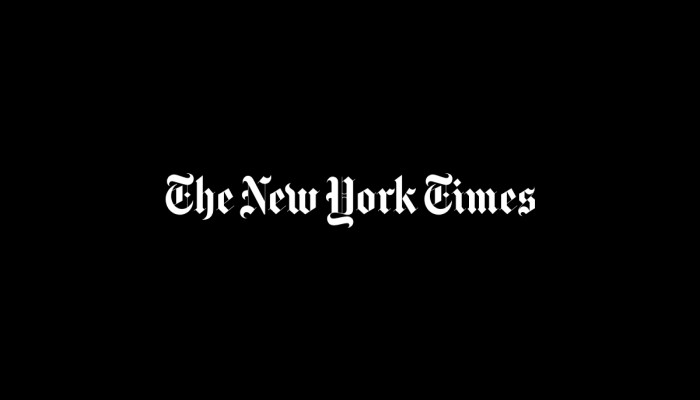The Indian diaspora needs to question the Western Media organizations which are deliberately misrepresenting India
- In Current Affairs
- 08:14 AM, Nov 22, 2019
- Anjali Kanojia
A Florida county recently denied tax payer-library funding for the New York Times subscription, citing the New York Times' rampant reporting of “fake news.” Fake news is not a recent phenomenon though it has received quite a bit of attention largely in part due to President Donald Trump calling out skewed reporting. Fake news is generally used when referring to biased media outlets’ misreports. This includes distorting facts, incomplete or agenda-driven verbiage, skewing the narrative and framing incorrect information as if it were facts and reality. Many such media outlets guilty of intentionally reporting fake news seem to be left-leaning; some of the well-known names which are also culprits are CNN, the Washington Post, the New York Times, as well as the radio outlet NPR and other platforms such as Facebook, YouTube and Google are engaged as well.
Media Bias
The media, around the globe plays a role in influencing public opinion. Media bias occurs when the Media systematically skews information reporting in a manner which crosses basic standards of professional journalism. The fake news phenomenon goes beyond yellow journalism, which is based on exaggeration and sensationalizing of news. The sensational, (also read ‘negative’) of news is all too common in the media and fake news consists of deliberate propaganda which is spread via traditional news media or social media. Intentional, agenda-driven reporting of information is big business.
According to the Pew Research Center, 70% of Americans generally feel that misinformation and fake news is a larger threat to the nation as compared to terrorism, illegal immigration, climate change, sexism and racism & violent crimes.1 Research from Gallup finds that though a majority of Americans continue to mistrust the media in general, there is a level of trust in local news sources far more in comparison to national sources.2
Perceptions towards the inherent bias seen in news media have changed over time, especially with Republicans believing that both national and local news are too liberal, while Democrats are slightly less likely to say the same.2 Independents, who are generally considered partisan ‘leaning’ do not seem to report a change in perception of how they view media bias.
About 42% of Americans think that the national media is “too liberal” 26% believe that their local news is “too liberal,” while only 13% believe national media is “too conservative” and 15% of local media is “too conservative.” 2 About 68% of U.S. adults surveyed believe that made-up news and information greatly impact Americans’ confidence in government institutions, and 54% believe that fake news has a major impact on our confidence in each other. 1
Liberal Elitism and Identity Crises in India and the Diaspora
The Indian identity seems fractured. Indians residing in India and in the West seem to gravitate towards international media outlets. This phenomenon occurs in spite of these outlets deliberately and systematically focusing on made-up news related to India. For example, below are some headlines regarding India from well-known, biased, international and Indian outlets:
- India’s Soundtrack of Hate, with a Pop of Sheen. – The New York Times
- A Mass Citizenship Check in India Leaves 2 Million People in Limbo. – The New York Times
- What India Looks Like When the Air Turns to Poison. – A Mass Citizenship Check in India Leaves 2 Million People in Limbo – The New York Times
- Court Backs Hindus on Ayodhya, Handing Modi Victory in His Bid to Remake India. – The New York Times
- India Plans Big Detention Camps for Migrants. Muslims are Afraid. – The New York Times
- India’s Supreme Court endorses right-wing vision relegating Muslims to second-class citizens. – The Washington Post
- India’s repression in Kashmir is not compatible with democracy. – The Washington Post
- India needs to reset its moral compass. – The Washington Post
- India was a miracle democracy. But it’s time to downgrade its credentials. – The Washington Post
- Hindus allowed to build on disputed holy site. – CNN
- The tale of Jolly Joseph: Mom, churchgoer, chatty neighbor… suspected serial killer. – CNN
- India is hurtling towards authoritarianism – CNN
- Delhi’s toxic politicians must be held to account for this deadly pollution. – The Guardian
- Ayodhya: India’s top court gives Hindus site claimed by Muslims. – The Guardian
- India Strips Kashmir of special status and divides it in two. – The Guardian
- Water cannons used against protesting students. – BBC
- Why is India’s pollution much worse than China’s? – BBC
- What cars and underwear say about India’s slowdown? – BBC
- This is it. I’m going to Die: India’s Minorities Are Targeted in Lynchings. – NPR
- Spate of Lynchings Target Minorities, Especially Muslims, In India. – NPR
- India’s Narendra Modi has had a free pass from the west for too long. – The Financial Times
- In Pictures: 100 days of crippling lockdown in Kashmir. – Al Jazeera
India is the world’s most populous democracy. There is nothing authoritative about Indian elites or the government making authoritative decisions against minority well-being. However, most headlines, on a daily basis portray India, a rising economic giant as a backwards nation, mired in class, caste politics and poverty. Any rational human being can take a look at the comprehensive negative and systematic narrative on India and figure out the inherent and obvious bias. However, an Indian, in the homeland or the diaspora seems to be deliberately oblivious to the anti-India agenda of the media.
Why does the Indian mind seem irrational? The Indian mind, for a large chunk, still seems colonized. Affinity for the colonizer, in this case the Abrahamic, West seems to be imbedded in the evolution (or regression) of the Indians in the social, political and religious realms. This mindset coupled with anti-India lobbies operating within mainstream media outlets seem to keep India on the media agenda, and in a negative light. How can one forget Furkhan Khan’s tweet, “If Indians gave up on Hinduism, they will also be solving most of their problems. What with all the piss drinking and dung worshipping.” She later claimed the tweet was misinterpreted. NPR did not fire her but seems to have accepted her resignation.
Why do Indians allow such hatred to be spewed against their own nation, people, customs and governance? Indians might believe that that being secular, (read anti-India, anti-Hindu) is socially acceptable, modern and cool. In order to assimilate, taking up fake Oxford-type accents, adopting the worst trends in food habits in hopes of emulating their former colonizers seems to show status, elitism. David Horowitz, in his book the Unholy Alliance: Radical Islam and the American Left aptly describes the history of liberals in the United States cooperating with outlier ideologies including radical Islam which fosters terrorism the world over. Indians too are guilty in ‘buying’ this agenda. Also, the blind embracing of anti-democratic principles such as communism – an ideology and system of government which has largely failed all around the globe – at the same time holding affinity for French wine and German cars seems comforting and acceptable to the colonized Indian mind. Instead of beating them, Indians have joined them. Against the well-being of their own kind.
Media Bias and Implications on Democratic Principles
The fake new train seems to be moving forward at great speed. However, with the advent of social media and globalization, platforms such as YouTube, Twitter and FaceBook are being challenged by the common reader when peddling fake news. The masses are calling out these outlets for obvious bias and discrimination when tweets and Twitter accounts mysteriously disappear, when YouTube removes factual content, but hurtful content receives algorithms to thrive.
Free and fair media is considered to be one of the principles of democracy, and unfortunately when this pillar becomes compromised and corrupt, democratic principles become diminished. According to the above-mentioned Pew survey, the groups believed to be responsible for make-up news are activist groups and political leaders. The same group surveyed believes that the onus of reducing the amount of made-up news falls on the news media outlets. The international media, as an institution is deeply drowning in communist-jihadi, anti-democratic value-based biases. However, there is hope; public opinion in the United States shows that local news is less biased.1, 2 The same phenomenon is evident in India; regional news in local languages seems to report accurate news as compared to big media corporations. Encouraging local and regional news, along with social media and the common man acting as a watch-dog is also hopeful. As far as the Indian mindset goes, it might take a while to become completely decolonized, if at all.
References
- Pew Research Center. “Many Americans Say Made-Up News Is a Critical Problem That Needs To Be Fixed.” Trust, Facts and Democracy. June 5, 2019. https://www.journalism.org/2019/06/05/many-americans-say-made-up-news-is-a-critical-problem-that-needs-to-be-fixed/
- Gallup. “Local News Media Considered Less Biased Than National News.” https://news.gallup.com/poll/268160/local-news-media-considered-less-biased-national-news.aspx?utm_source=alert&utm_medium=email&utm_content=morelink&utm_campaign=syndication
- Horowitz, D. (2006). Unholy alliance: Radical Islam and the American left. Regnery Publishing.







Comments